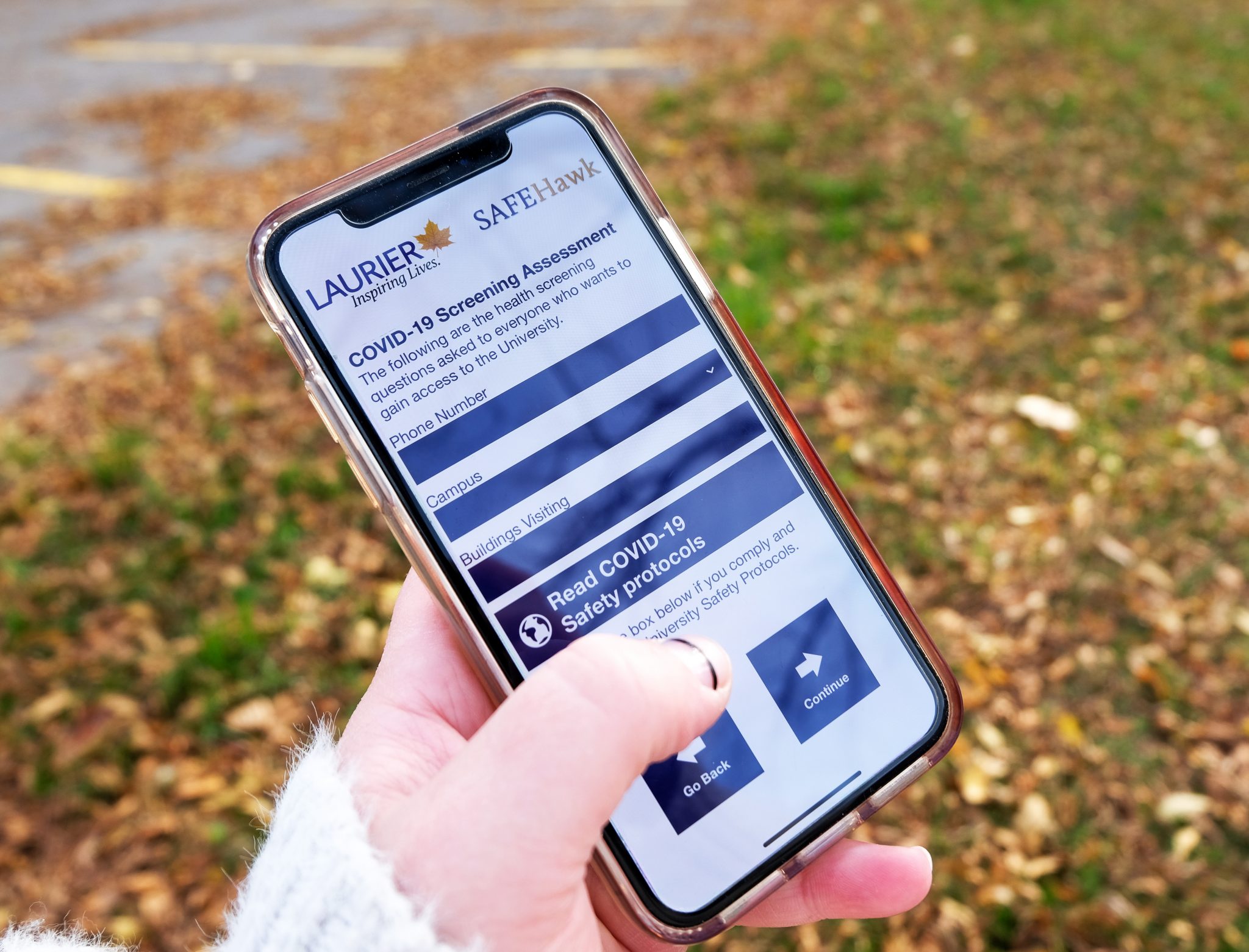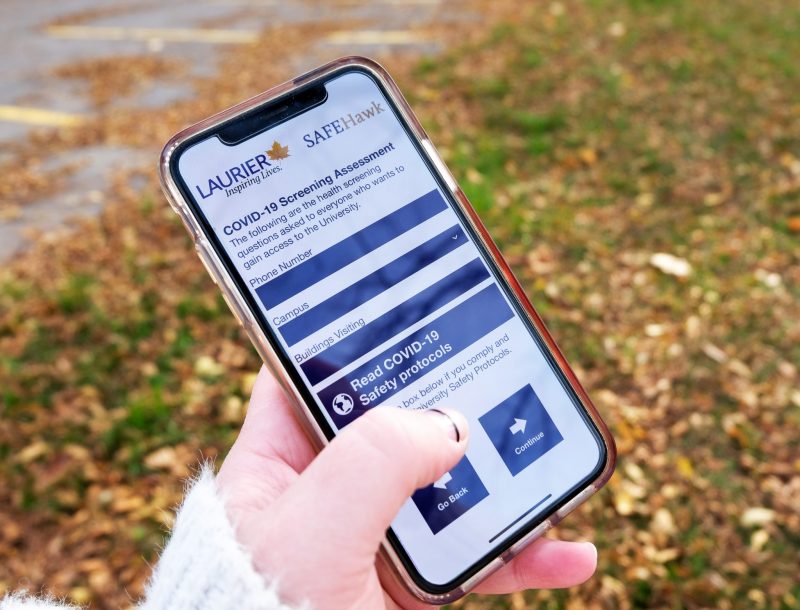Laurier’s SafeHawk app receives self-assessment feature for those wishing to access available campus services


The Laurier SafeHawk app, which features campus-specific safety tips and emergency resources, has been updated to include a COVID-19 self-assessment, as a part of the school’s effort to contain the spread of the coronavirus.
The COVID-19 self-assessment leads those wishing to gain access to campus through a series of health screen questions.
Once users fill in all the required fields, they will either receive a green “pass” badge, which means they are approved to come on campus, or they will receive a red “fail” badge, which means they have been denied access.
“The university recognized—as we were preparing to get to September — that using an app in some fashion, to be able to allow students to do a self-assessment before coming to campus, would be the ideal outcome,” Dan Dawson, chair of Laurier’s pandemic recovery committee said.
Dawson explained that upon review, the SafeHawk app was eventually determined to be the best host for the COVID-19 self-assessment.
“That analysis led us to review the [software] that is behind the SafeHawk app and basically adapt what had been in existence for several years to include this new feature which made it relatively straightforward for students.”
Screening information collected under the app’s privacy policies is used solely by the school for purposes related to the health and safety of the Laurier community
“There’s a small group of us that are overseeing all of the reopening strategies and plans for the university. We have access to a confidential dashboard that basically allows us to see, on a daily basis, how many individuals have used the app, and whether they were a Brantford student or a Waterloo student,” Dawson said.
“We can also see on an aggregate basis how many people successfully completed the app, but how many people were denied access. So it has no personal identifying information to it, but it allows us to monitor usage of the app.”
The questions that you’re asked in the SafeHawk app mirror the questions that are in the provincial [COVID alert] app, they’re almost the exact same, the wording is slightly different. We tried to make it a little bit more student-focused as opposed to what the provincial questions were.
Dan Dawson, chair of Laurier’s pandemic recovery committee
Although most services for students will continue to be delivered remotely, some on-campus services are now open, including the Athletic Complex, Student Wellness Centre, select study spaces and food services.
These services require students to either show their badge upon entering, or to show their badge on a spot-checking basis.
“We really felt that having this tool in place before we opened up the student study spaces was a real critical element of making sure that we could operate those study spaces in a safe and controlled manner,” Dawson said.
“The week before Thanksgiving, we had the highest number of students using the app in that week, which was ranging between 600 and 650 on a daily basis … So we can see in real time how many people are completing the app, which is not a guarantee that they’re coming to campus.”
Although not previously required, as of Oct. 21 anyone intending to visit the Fresh Food Company, or dining hall, on campus will be required to complete the self-assessment beforehand.
“The questions that you’re asked in the SafeHawk app mirror the questions that are in the provincial [COVID alert] app, they’re almost the exact same, the wording is slightly different. We tried to make it a little bit more student-focused as opposed to what the provincial questions were,” Dawson said.
Faculty and staff who are approved to return to campus are required to fill out a Qualtrics survey, a mandatory web-based self-assessment on a daily basis before being approved to work on campus.
While Laurier has seen a significant number of positive cases among students, Dawson credits this to the school’s transparency about the recent incidents of COVID-19.
“Any case that is reported to us and confirmed from the student themselves, we’re reporting it and we’ve got the tracker that’s up on the COVID-19 webpage of Laurier,” Dawson said.
“We’re being very transparent about reporting all cases that are known to us, the recent incidents that have taken place over the past week that have been noted in the media, that has been a collaboration between Public Health and us.”
Should a member of the Laurier community test positive for COVID-19, Public Health will conduct contact tracing to notify individuals who may have been in close contact and may be at risk. Any identifying details will not be shared publicly.
Dawson stressed the importance of students continuing to be vigilant in their behaviour and be as safe as possible.
“These recent cases, they’ve happened in a couple of clusters and it’s been reported that they’ve been linked to off-campus study activities. And I know the Chief Medical Officer of Health … stated as part of her press conference, if you need to study, do it using the technology that’s available to you and don’t feel the need to go gather with a group of people in a small space.”


